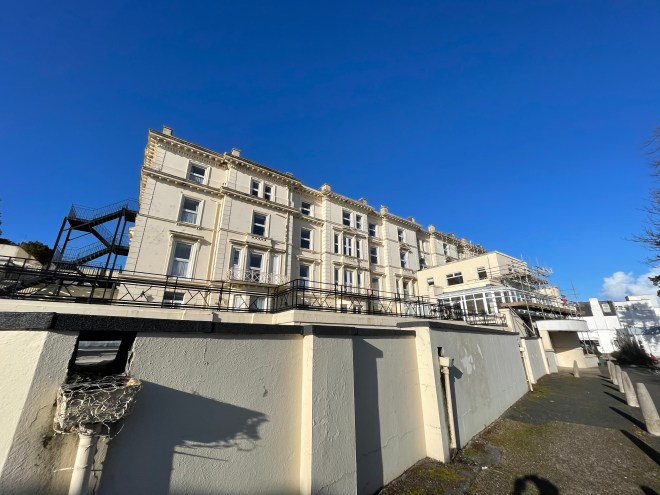Intro
I have covered a few Apple devices in the past, but have always said I was more of an Android user because of the amount of devices I get though.
The latest range is different though, not only are there more sizes available than ever before, but you also now get 5G built in for the fastest networking speeds possible.
Vodafone kindly reached out and offered me a loan of the Apple iPhone 12 Pro model for a few weeks so I can see if the latest model is enough to sway me over from my Android roots, but also to check out the improvements over the iPhone 11 I reviewed a little while ago which got some good results.
At time of writing the review the iPhone 12 Pro costs from £999 unlocked, or is available on Pay Monthly contracts to spread the cost over a 24 month agreement which will also include your allowances too.
I normally carry two devices around with me at the same time, whilst my Vodafone SIM is not my main one, I was able to use the provided one to do all the things I would normally do with my main phone so any examples can be based on real world testing with a SIM card in use too.
No one from Vodafone or Apple has had any viewing of this review before it went live so everyone is seeing it at the same time, also the device I was sent was a review model which was returned back to them once the review period was over so no payment or free device was offered for writing this.
Design
Apple hardly ever change much of the design in their phones, there are slight changes here and there, but hardly much of a design change year on year.
However the iPhone 12 range goes back to the iPhone 5 design with squared off edges instead of round ones, this means whilst the iPhone 12 Pro has the same screen size as the older iPhone 11 Pro model, the actual phone size is smaller and easier to hold thanks to the new box like design.
Apple really go all out in build quality on their Pro models, whilst the iPhone 12 Mini and 12 use aluminum for the body, the iPhone 12 Pro and Max models go for a stainless steel construction instead which is heavier and more costly, but also very much a fingerprint magnet so you will be wanting a case to protect it.
The front camera will be covered more in the camera section of the review, but as a quick overview you get a 8 megapixel camera for stills such as selfies which is more than enough for most people. The camera can also record in 4K but more about the cameras and what they can do later on in the review.

The screen comes in at a decent 6.1 inches in size using OLED technology for deep blacks and bright colours, you still get the unfortunate notch up top which has not got any smaller over the years and to some may be off-putting, however once you get used to it you almost forget it is there and is not as much a deal-breaker as when it first came out a few years ago.
There were many rumors that Apple were going to use a 120hz display this time round, for what ever reason it never appeared so you get a traditional 60hz refresh rate, even on the Pro models.
You can defiantly tell the difference in some games between 60hz and 120hz, but offering 60hz at least helps with battery performance, but it was a shame to have it missing when so many other flagship phones available offer the faster refresh rate.
Since the iPhone X, there are no buttons anywhere on the front, instead you get what now feels normal in swipe gestures to navigate around, it also means you get a larger screen without making the phone larger like we used to get in the iPhone 8 Plus phones that had Touch ID still but needed a larger frame to house it.
Up in the notch area you get a lot more going on than just a front facing camera, there are sensors hidden away to enable things such as Face ID which is one of the most secure ways to unlock, although these days with a COVID-19 pandemic going on and everyone having to wear face masks, you will find you using a pin or password more until we can stop wearing masks and go back to some sort of normality.
I will say though that when I did get to use Face ID, unlocking was as fast as ever with lightning fast face recognition, even in poorly lit conditions such as indoors at night time, also being able to scan your face and pay was great for transport too.

Looking over at the left side you get a little switch that has become iconic on iPhone devices and lets you quickly switch between normal and silent modes with a quick flick, very handy if you need your phone on silent for meetings or work for example.
Below this you get the volume up and down buttons as you get on every other phone of course, these can also be used as camera shutter buttons when the camera is open if you prefer pressing a real button instead of using an on screen controls.
Below that near the bottom is the sim card tray that you pop out using the pin in the box, however you can use any other pin you have from other phones or a paperclip if you have one handy, of course as expected you get a single SIM option using a Nano SIM and no expandable storage.
However if you do want to go dual-SIM you do have the option of eSIM meaning you can have one physical SIM as well as one eSIM if needed.

Over on the right hand side you get a single button which is used mainly to switch the device on, however once on you use it to activate Siri if you do not want to use the voice command to bring it up instead.
This may be a little confusing for people coming from devices older than the iPhone X as to turn the phone off you need to hold this button as well as a volume button for a few seconds.
This button also acts as confirmation when you want to purchase an app by double tapping, it scans your face and approves the payment within seconds, also for using Apple Pay a quick double tap brings up the payment option for using wireless payments.

Up at the top there is nothing to see apart from a single line near the corner, this is to help the antenna system get better signal due to the design of the internals of the phone, it was a huge issue back around iPhone 4 times when not having these and holding the phone would see a dramatic drop in bars, so Apple built some antenna lines into the structure to help and they have been there ever since.

Down at the bottom you get a set of loudspeaker holes either side of the lighting port, yes Apple still went for the Lighting port instead of the USB-C that the iPad Pro uses and was one of the but rumors that was going around about the possible switch before it never happened.
Something that a few people have picked up on is the fact Apple designed the bottom with three holes one side, and five the other making it look not symmetrical and very ‘un Apple like’ from a design front.

Turning over to the back you have a full glass panel with the Apple logo slap bang in the middle as Apple do like to show off their logos on their devices, and is almost a status symbol for many people.
The camera system is positioned up top in the left hand corner and has been the same idea since the iPhone 11 took the design over a year ago, but this time it has much more going on under the hood.
The Pro devices have three main cameras over on the back, these include a super wide angle, a wide angle, and a telephoto for zooming in, although a limited amount of zoom control and nowhere near the 10x you get from devices such as the Samsung Galaxy S21 Ultra.
You also get the LED flash for helping to boost taking photos in dark conditions or of course using as a flashlight, what will be one of the main uses of this bright LED on the back.
Finally there is another sensor there, this is not a ToF sensor like some other devices have, but a new LiDAR sensor which is a lot more advanced and allows for all the AR type functions you would want to use a device like this for, there are a few examples already but this will get much more popular going forward, it does however also help with better portrait photos even in low lighting conditions.
Software
I have said a few times before that I have always been more of an Android fan over iOS because for a while iOS just felt like it was almost too simple for a geek phone fan such as myself, sure some people prefer the simple setup, but compared to what Android can do there was a lot to be looked at.
However with iOS 14 that all changed, in one of the biggest visual changes in years Apple have finally caught up with what Android offers, and in some way has actually offered a better alternative.
The biggest change is the new widget options that you can include on your screens to fully customise your home screen to what you want, and these are not just boring basic ones but both look great and serve a purpose.
You also have the new App Library which will organize your apps into folders depending on what the type of app is, this also allows you to remove apps from the actual home screen without needing to uninstall, the app stays installed but in this handy folder or the A-Z list.
Not only does this make the whole experience much cleaner, it means you have more control over what apps you want on the main screen and which you can just keep in a folder page off to the side.
There are other improvements such as iMessage which now lets you have pinned group chats, adds new Memoji options to make a custom version of yourself to share and better group options for conversations.
Other improvements include better mapping via Apple Maps, a new Translation app so you can translate with ease between languages and handy Picture-in-Picture mode so you can continue your video call whilst looking at something else on the screen.
There are a lot more improvements that come with iOS14 so to find them all it is best to check out the official page from Apple here, but in an overview, this Android fan is very impressed with iOS14 and now would be happy to use as a main phone.
Performance
When it comes to performance, this is an area Apple will always perform very well in because they use their own custom processor which allows them to control the whole experience from start to finish, giving you improved battery performance as well as when it comes to loading apps and the whole OS.
If you look up on paper you may notice that whilst the actual spec such as battery and RAM seem a lot lower than some of the flagship Android counterparts, because Apple manages the whole process they actually managed to outperform a lot of these so it’s not just about the numbers, but what you do with them that count.
The iPhone 12 Series comes with the latest A14 Bionic chip which has a huge amount of power and let’s you multitask a ton of apps in the background, whilst also being able to run the latest games smoothly with no slowdown or lag.
Also the latest processor helps when it comes to the camera by improving the photos taken, this is because when you taking a photo, the processor will work out a load of difference tasks in the background to improve contrast, brightness, shadows, as well as facial recognition and a ton of other tasks, you won’t see this happening because you literally tap the screen to take a photo when it’s there, but the processor does a huge amount of work to improve and give you the best photo possible.
Battery on paper seems low at 2815mAh which is actually a 7.5% smaller battery than the iPhone 11 Pro it is replacing, and also has to add 5G support too, but thankfully due to the processor performance and improvements you don’t really notice a dip in battery performance, this is something to consider when you look at the competition which have in some cases over 4000mAh batteries.
I was easily able to get through a full day of use as my main device doing my usual testing of playing videos, lots of social media, emails, some phone calls and a lot of camera use, I even connected an Apple Watch for a few days and was able to last the day with Bluetooth connected all day.
Thankfully the iPhone 12 Pro also has Wireless Charging for when you need to top up that battery on the move, and this works with all standard QI chargers so thankfully no special Apple charger is needed. You also get the option of 18W charging via cable, but this needs a separate charger purchase, the one in the box still a slow by today’s standards 5W but gets the job done and most people will end up charging overnight anyway.
Other key points worth covering is the iPhone 12 series are all IP68 dust and water resistant for up to 30 mins of water at up to 2 meters which means you can get wet in the rain or put in the snow or a puddle to get that fancy photo, just avoid going swimming with it still in your pocket.
Network support is great too with the latest 4G+ technology included for super fast downloads on the go, and even though it does lack 5G, considering that is still a costly feature to have, and coverage still very new, most people will be more than happy with the 4G+ speeds you can get, when I tested I was able to get 150Mbps, but this will depend on network and area you are in.
Unfortunately due to my location I do not have access to 5G here so was not able to test out the performance on this device, but I have used 5G on an iPhone at a different time and performance was right up there with the best of the competition.
Camera

Yet again Apple have pulled out all the stops when it comes to offering a great camera performance, and with the exception of the better low light sensor in the Max version, the iPhone 12 Pro features the best photography experience the iPhone has had to date.
Below are some selfie photos taken straight from the device with no editing at all, well I say that, but I did have to make one small change and that was because Apple use their own new HEIF format for photos instead of JPG as this saves storage space, but sometimes is not able to be opened on some devices so for this review I used an editor to change for format but kept the quality at its best.
The front camera comes in at 8 megapixels and can also record 4K video content if you wanted which was great for anyone who is getting into vlogging.
You get some interesting filters you can use too by using the processing power such as studio lighting, normally these types of effects are reserved for just rear cameras on a lot of smartphones, and whilst these can be hit or miss, they can produce some great results to show off on social media.
Video selfies were also very good thanks to not only some great hardware, but the A14 Bionic processor being able to chew through all that data and provide excellent video content with great audio to go with it.
If you are looking for a phone to go video blogging with then look no further, the iPhone 12 Pro has fantastic quality in both video and audio performance.
Over on the back you get the same main triple setup as on the iPhone 11 Pro from a year ago, the biggest difference is the new 7P lens over 6P with a lower aperture of f1.6 instead of f1.8 which should mean improved lower light performance even if just a little.
You still get the ultra wide angle camera and telephoto for zooming giving this device a good set op camera options, although does lack in the zooming area when compared to some of the competition which now offer 10x optical zoom.
There is an extra sensor on the back as mentioned before and this is called the LiDAR sensor and is used for improved portrait shots as LiDAR works at a distance up to 5 meters and better at working out distances over the ToF sensors that other devices used, it also helps perform better low light portraits due to the way it works.
Portrait mode has been improved over older models and both selfie and rear camera samples look great, a few examples are below and it seems to do a good job with getting the foreground separated from the background thanks to having two cameras to get information from.
Video quality on the rear cameras is great quality with a maximum of 4K resulution at 60fps if you want to max it out, the sample shows below are recorded at 4K 30fps as that is the most popular to also help save file size.
Overall quality is great capturing realistic colours and lighting even in poorly lit conditions, and stabilisation is great too when walking thanks to the OIS built in, this really is a great device for when it comes to video recording.
If you’ve ever used an iPhone before you will notice very little has changed over the years, you get a selection of different modes at the bottom you can swipe left and right to switch between.

In fact even if you’re using an Android phone this is very similar to what most smartphones have so will take very little to get used to no matter which phone you are switching from.
Final Thoughts
So after using the device for a few weeks could I use this as my main device, and it is worth you buying when compared to all the other options out on the market at the moment?
The good thing this year is you have a few options if you are tied to the so called ‘Apple Ecosystem’ this is where you have had Apple for a while and use their services such as iCloud and iMessage and are therefore tied into them going forward.
Apple do make an iPhone 12 Pro Max if you want the largest phone possible, the screen is actually quite a bit larger, so it is nice to see the company continue with a 6.1 inch Pro model as well as having the 6.1 inch non pro too.
If you are someone into the numbers game and looking at specs then you may think the iPhone 12 Pro is way off the mark, it only has 12 megapixel main camera, it has a 60hz screen instead of the 120hz we see on many other phones, and the screen resolution is lower than the competition.
However what Apple do well is package their key features and make them more than just about the numbers, but make the whole experience usable and worth while.
Yes you get a notch still which is no smaller this time than the last few versions, but after a while you almost forget it is even there.
If you are tied into Apple and want a great smartphone with the best camera possible, but do not like a huge phone then the iPhone 12 Pro is a great choice, the only better choice you could make is the Max but that costs more, and is much larger in size.
If you are not interested in telephoto cameras for zooming you do have the iPhone 12 and iPhone 12 Mini available at a lower price, however be warned that whilst the Mini might tempt you with the smaller size, the smaller battery really takes a hit, especially if you have 5G enabled, thankfully the battery on my 12 Pro model was not an issue.
A big thanks to Vodafone UK for providing the device to review.
 MobileManDan
MobileManDan



































































































